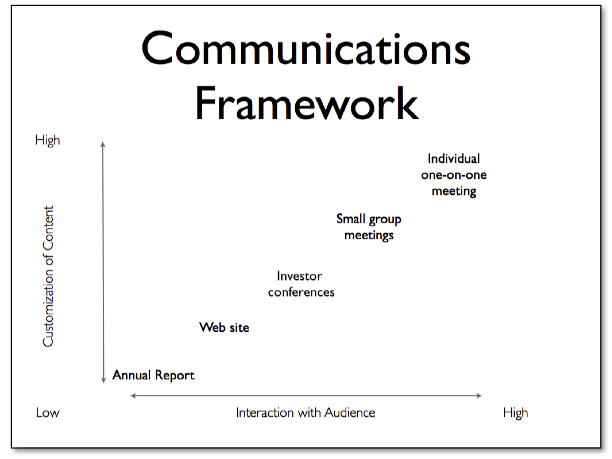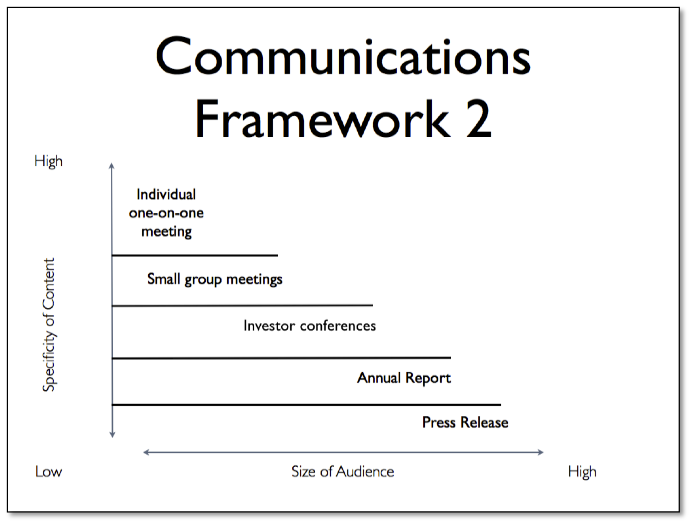
It almost goes without saying (but I will say it nonetheless), that a key component of investor relations is the ability to communicate the appropriate message to the right audience.
When disclosing information to investors and the public, the investor relations function communicates to multiple audiences, generally through multiple channels. The audiences that consume investor relations information are as diverse as institutional investors, retail investors, employees, company creditors, suppliers, industry competitors, rating agencies, governmental regulators and the general public. Additionally, these audiences receive their information through a multitude of sources ranging from print media, the internet, mass media, specialized electronic networks, voice, personal interviews, group presentations and one-on-one meetings.
Because investor audiences and their information needs are so diverse, several frameworks are helpful in thinking about how to structure the investor relations message. The first, suggested by Professor Robert Dolan of Harvard University[1] simply attempts to compare the amount of customization of content to the amount of audience interaction:
As can be seen, the more general the audience, the less the opportunity to tailor the information to the audience.
In addition, one can think about providing information in layers, starting with the general and moving up to be more specific, always keeping in mind regulations that prohibit the selective disclosure of important information. Under this approach, the framework appears as follows:
Both of these frameworks derive from what is probably the first maxim of communications: know your audience. If you know who you are speaking to and how specialized the message needs to be, then you can customize what you are saying to best fit the competing goals of discussing what you want to say and delivering what your audience wants to hear.
[1] Dolan, Robert J., Integrated Marketing Communications, Note, Harvard Business School Press, 1999.
John recently retired as a Lecturer in Management at Rice University’s Jones Graduate School of Management, where he taught investor relations. Prior to that, John was in charge of investor relations for Sysco Corporation and Walgreen Co. He holds a MBA from the Kellogg Graduate School of Management at Northwestern University and a law degree from Loyola University of Chicago.
You can learn more about John’s thinking about investor relations at his blog, Investor Relations Musings.


Yes communication makes a good relation and every place communication is a good approach.In addition, one can think about providing information in layers, starting with the general and moving up to be more specific, always keeping in mind regulations that prohibit the selective disclosure of important information.Thanks for sharing a good information.